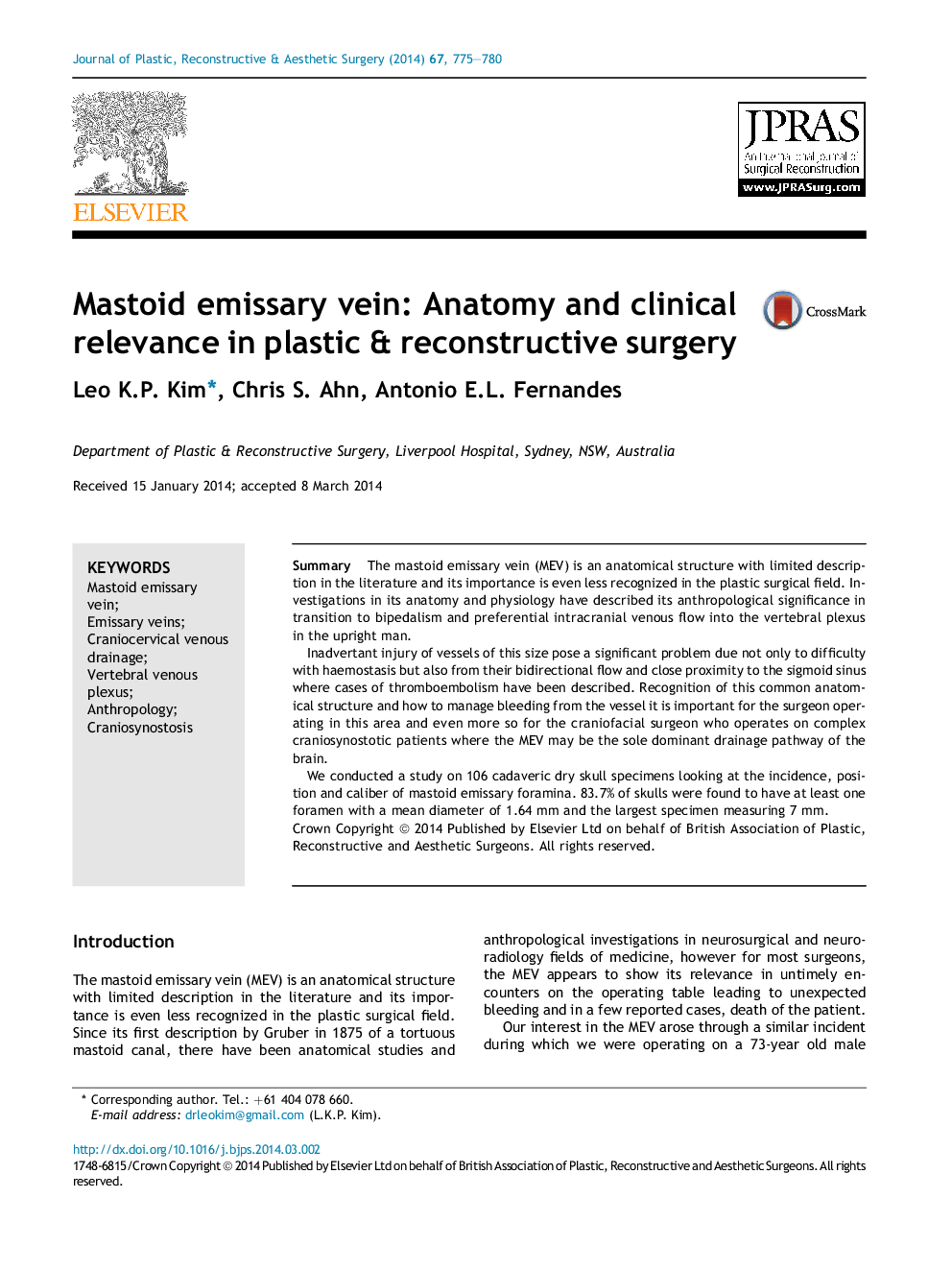| کد مقاله | کد نشریه | سال انتشار | مقاله انگلیسی | نسخه تمام متن |
|---|---|---|---|---|
| 4117342 | 1270303 | 2014 | 6 صفحه PDF | دانلود رایگان |
SummaryThe mastoid emissary vein (MEV) is an anatomical structure with limited description in the literature and its importance is even less recognized in the plastic surgical field. Investigations in its anatomy and physiology have described its anthropological significance in transition to bipedalism and preferential intracranial venous flow into the vertebral plexus in the upright man.Inadvertant injury of vessels of this size pose a significant problem due not only to difficulty with haemostasis but also from their bidirectional flow and close proximity to the sigmoid sinus where cases of thromboembolism have been described. Recognition of this common anatomical structure and how to manage bleeding from the vessel it is important for the surgeon operating in this area and even more so for the craniofacial surgeon who operates on complex craniosynostotic patients where the MEV may be the sole dominant drainage pathway of the brain.We conducted a study on 106 cadaveric dry skull specimens looking at the incidence, position and caliber of mastoid emissary foramina. 83.7% of skulls were found to have at least one foramen with a mean diameter of 1.64 mm and the largest specimen measuring 7 mm.
Journal: Journal of Plastic, Reconstructive & Aesthetic Surgery - Volume 67, Issue 6, June 2014, Pages 775–780
